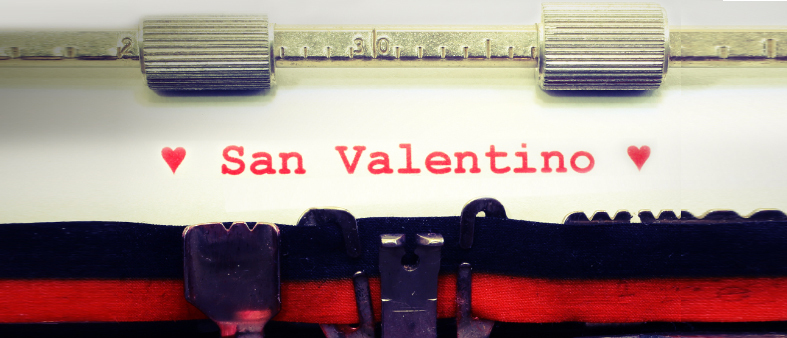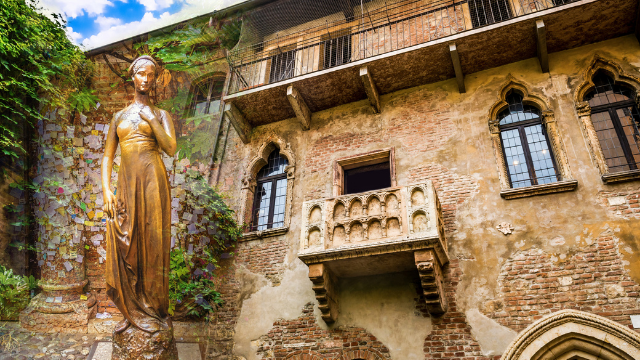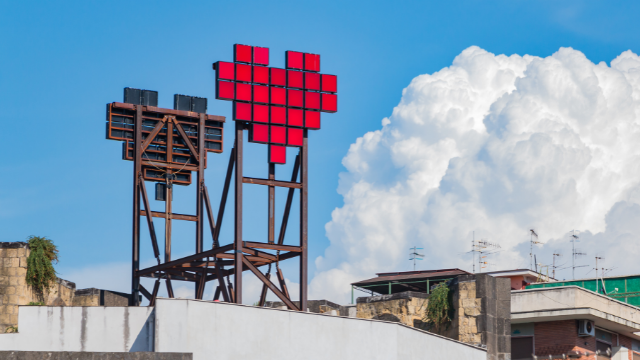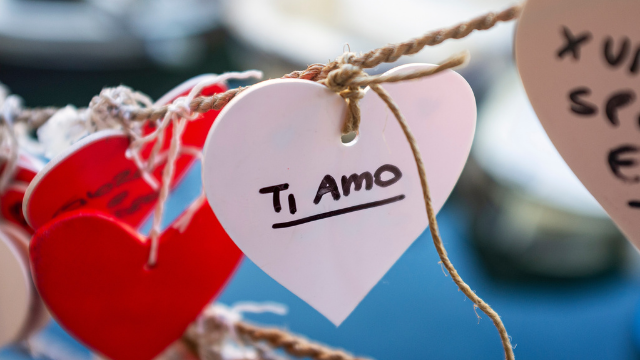
On this special occasion, lovers worldwide gift each other candy, flowers, and presents in the name of St. Valentine. Let’s find out how Italians celebrate this occasion.
Who was Saint Valentine, and where does the celebration come from?
Did you know that Saint Valentine (San Valentino) was Italian? He lived between Rome and Terni—his birthplace—in the third century and died as a martyr.
He was not particularly liked by the religious elite. In fact, when he moved to Rome, he began to marry persecuted Christian couples in secret.
Word spread to Emperor Claudius II, who demanded Valentino renounce his faith. He refused and was martyred on February 14, 269.
However, this date did not immediately become San Valentino. It took some time. Valentine’s Day was established as a religious occurrence only two hundred years later by Pope Gelasius I.
Some historians think that the celebration of San Valentino was instituted to “Christianize” the pagan festivity of Lupercalia.

Saint Valentine is not only the patron saint of love but also of epilepsy and beekeepers, and numerous legends and folklore revolve around this figure.
For example, it is said that when the emperor found out about all these secret ceremonies, Valentine was imprisoned. There, he fell in love with a blind girl, the daughter of his jailer, and made her see again.
Or again, one legend says that he once saw a couple fighting while walking. So, he gave them a rose, told them to hold their hands together, and reconciled them. In a nutshell, he was a good couple’s therapist!
The first person to commemorate Saint Valentine’s Day as a romantic celebration was the English poet Geoffrey Chaucer with his poem “The Parliament of Fowls.”
The oldest known valentine still in existence was written in 1415 by Charles, Duke of Orleans, who wrote a poem to his wife while imprisoned in the Tower of London following the Battle of Agincourt.
Now that you know the curious history behind this celebration let’s look at what Italians do on this special occasion.
What about Italy, the Shakespearean “Land of Love”?

Valentine’s Day is undoubtedly celebrated in Italy. However, it is less commercialized than many other countries—although it is still common to find a variety of heart-shaped products, special restaurant offers, and cards.
What is Valentine’s Day called in Italy?
In Italy, Valentine’s Day is La Festa di San Valentino (Saint Valentine’s Celebration) or La Festa Degli Innamorati (The Lovers Celebration).
How to wish someone a Happy Valentine’s Day in Italian?
You can tell them:
Buon San Valentino! or
Buona Festa Degli Innamorati!
To celebrate this holiday, Italian lovers give red rose bouquets, plan romantic dinners, and gift each other chocolates, much like in many other countries around the world.
However, there are a few specifically Italian Valentine’s celebrations and tokens of love.
How to Celebrate Valentine Day’s In Italy

Baci Perugina
The renowned Italian chocolate maker, Perugina, celebrates this Day by making a special edition of the cioccolatini (chocolates). As usual, the foil wrapper contains a “love note” with a romantic phrase. Most people prefer classic Baci Perugina, though.
Festa Della Promessa a Terni
At the Festa Della Promessa (Promise Feast) in Terni—Saint Valentine’s hometown–on the Sunday before February 14, couples to marry attend a Mass and profess their love.
Verona in Love
The city of Verona, where Shakespeare’s Romeo and Juliet took place, celebrates Valentine’s Day with a four-day celebration called “Verona in Love.” A massive red heart is painted on the floor of Piazza Dei Signori, heart-shaped lanterns are placed all over the city, and more than a thousand letters addressed to Giulietta (Juliet) arrive each year.
Locks of Love or Lucchetti dell’Amore
Locking padlocks to railings and lamp posts is recent lore. It came about after the movie and book Ho Voglia di Te (I want you) came out. The characters of this cringe-worthy story tie a padlock with their names on it around a lamppost on the north side of Rome’s Ponte Milvio and then throw the keys in the Tiber River. Since then, thousands of Italian piccioncini (lovebirds) have flocked to railings, lamp posts, and any other thing that you can tie stuff on to lock their love. However, many municipalities have placed bans on having them because of safety concerns and decorum.
Camogli
This beautiful coastal town in the region of Liguria hosts a yearly festival called “Lovers in Camogli” (Innamorati a Camogli). Couples hang heart-shaped cards with their names on fishing nets on the harbor’s wall. The cards that withstand the weather conditions for the entire week represent the relationships that will stand the test of time.
Quero
In Quero, in the province of Bolzano, a massive number of oranges is rolled down a slope near the church of Saint Valentine. This “good luck,” orange-themed tradition is not the only one in Italy.
Vico del Gargano – The Village of Love
In fact, San Valentino is also patron saint of Vico del Gargano, in the Puglia region. On February 14, the town, nicknamed ‘The Village of Love’, and the saint’s statue are decorated with thousands of oranges. There is a slow procession and lots of orange juice.
You might be wondering why oranges: in Italy, flowers from the orange tree (fiori d’arancio) are associated with happy marriages (matrimonio). Orange juice, when given to a romantic interest, becomes a powerful love potion.
In Pozzoleone, instead, they organize the Fiera di San Valentino, which is an event that dates to the 1500s.
In Palmoli, they cover the floor of the church with bay leaves. In Padova, instead, they celebrate the love of family and children by distributing blessed keys.
Now that you can impress your lover with your newfound knowledge of Valentine’s Day in Italy let’s look at how you can express your feelings in Italian.
How to Say I Love You in Italian – Love Vocabulary

Here are a few things you can say to your lover on San Valentino. But, of course, you might also find these words and sentences written on chocolate boxes and cards.
Plus, these are all phrases you should know to become fluent in the Italian love language. You know what they say: falling in love can help you learn a language.
- Ti amo – I love you
- Amore mio – My love
- Tesoro mio – My treasure
- Ti amo tanto/molto – I love you a lot
- Mi sto innamorando di te – I’m falling in love with you
- Mi sono innamorata/o di te – I fell in love with you
- Buon San Valentino – Happy Valentine’s Day
- Sei sempre nel mio cuore – You are always in my heart.
- Ti amerò per sempre – I’ll always love you
- Sei l’amore della mia vita – You’re the love of my life
- Sei la mia vita – You’re my life
- Sono pazzo di te – I’m crazy about you
- Ti amo da impazzire/alla follia – I love you like crazy
- Ti amo da morire – I love you to death (not as bleak in Italian)
- Voglio solo te – I want only you
- Ti voglio bene – I love you (often for friends)
- Mi vuoi sposare – Will you marry me?
- Ti adoro – I adore you
- Una rosa rossa – A red rose
- Un mazzo di fiori – A flower bouquet
- Un mazzo di rose rosse – A red roses bouquet
- I cioccolatini – Chocolates
- Un anello – Ring
- Gli innamorati – Lovers
- Una cena romantica – A romantic dinner
- Un regalo – A present
- Un bigliettino – A note
- Una cartolina – A card
- Una lettera d’amore – A love letter
- Palloncini – Balloons
- Un bacio – A kiss
- Un abbraccio – A hug
- Il/un cuore – The/a heart
- Cupido – Cupido
Profess Your Love in Italian with Pimsleur

Pimsleur All Access provides unlimited access to Italian plus 50 additional languages across unlimited devices for four family members.
Give us 30 minutes a day and we’ll have you speaking a new language in no time. That’s all it takes for you to confidently inquire about prices, order dinner, ask for (or offer) directions – in your new language – with a near-native accent. Just listen, respond and learn to converse in … French while commuting … German while jogging … Italian while cooking. It’s really that portable and flexible.
No Comments for "Love and Valentine’s Day in Italy – That’s Amore!"